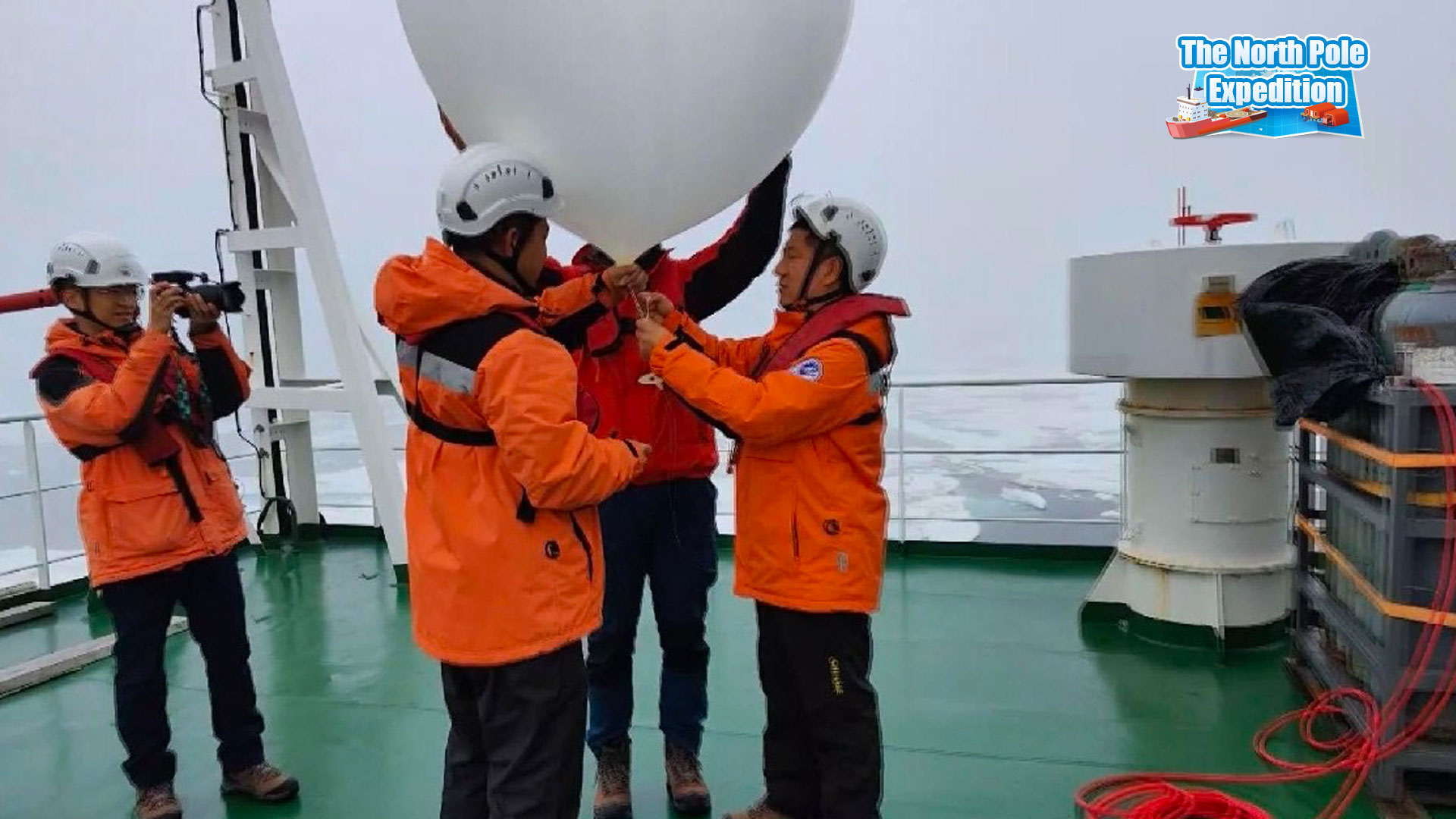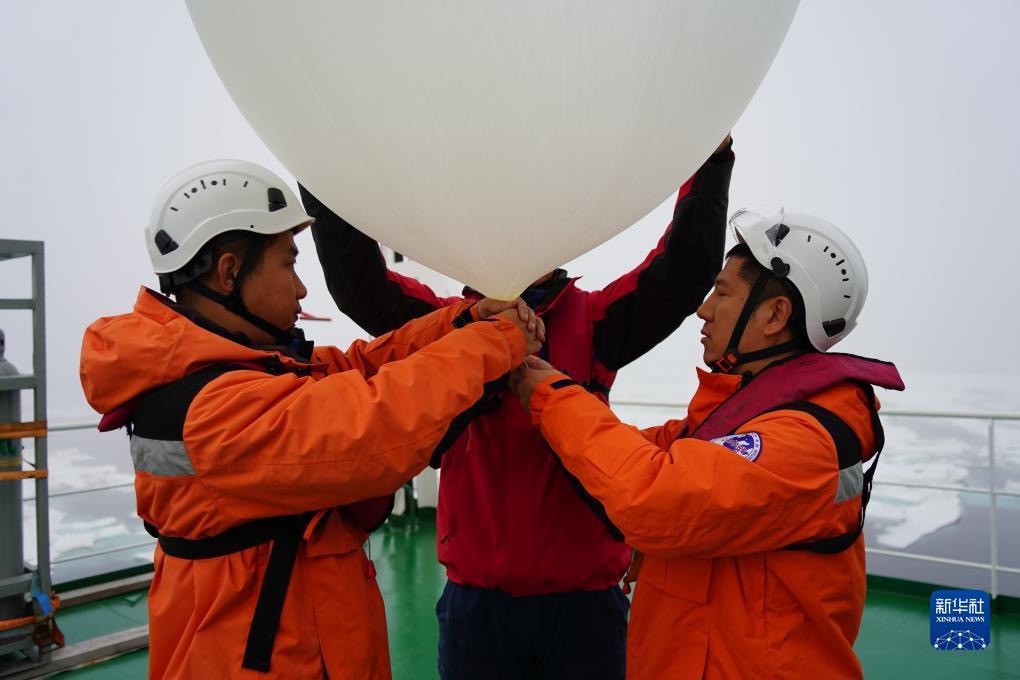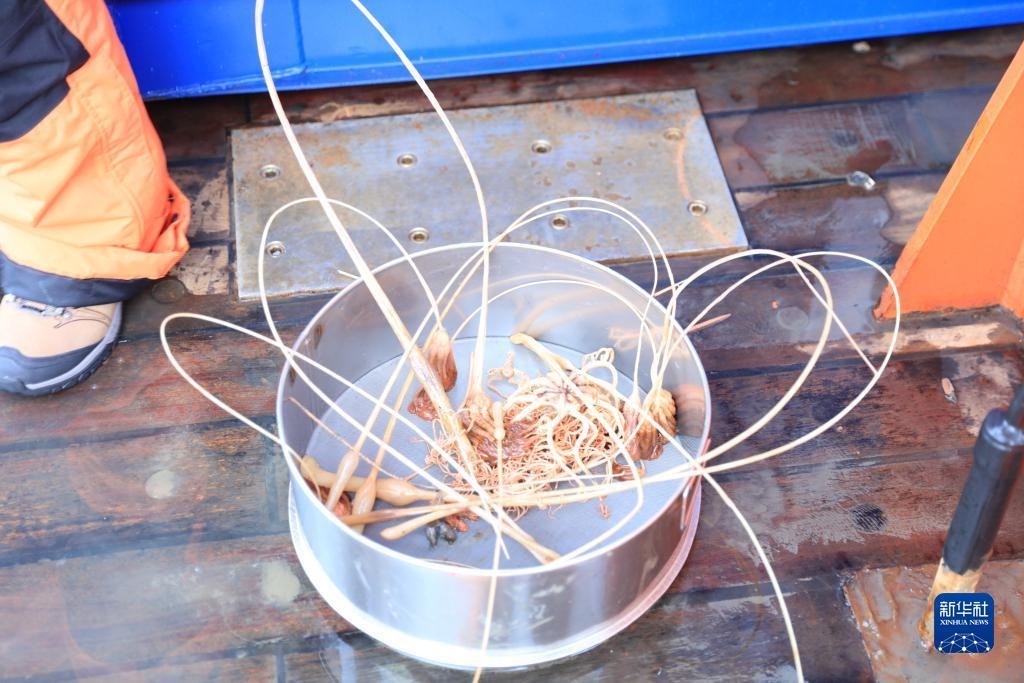
Members of the expedition team prepare to fly the weather balloon on July 29, 2023. /CCTV Plus
Members of the expedition team prepare to fly the weather balloon on July 29, 2023. /CCTV Plus
Editor's note: Chinese scientists have been onboard the Xuelong-2 icebreaker since July 12 for the 13th Arctic Ocean scientific expedition. They are investigating the geology and geophysics of the mid-ocean ridge as well as key environmental factors related to atmosphere, maritime and climate change. The team is expected to return in September. Follow us for the latest stories from the expedition.
A team of 45 Chinese scientists are currently conducting research in the Arctic for the country's 13th Arctic Ocean scientific expedition.
The team, onboard the country's own polar icebreaker, Xuelong-2, had arrived at its first operation station in the Chukchi Sea on the afternoon of July 26 Beijing time after 15 days of sailing at sea.
The expedition, organized by the Ministry of Natural Resources, is intended to investigate into the geology and geophysics of the mid-ocean ridge, as well as atmospheric, sea ice, marine and subsurface environmental surveys, and surveys of biomes and pollutants.
It will obtain key information and data needed for research in Arctic Ocean environmental protection and marine pollution assessment, as well as mid-ocean ridge dynamics.
The expedition team consists of eight different groups with various scientific tasks, and they work in two shifts for 24 hours a day for about 40 days due to the intensity of missions.

Scientists in the Atmospheric Environment Group fly a weather balloon on July 26, 2023. /Xinhua
Scientists in the Atmospheric Environment Group fly a weather balloon on July 26, 2023. /Xinhua
On Saturday, scientists in the Atmospheric Environment Group flew a weather balloon to take a radiosonde to an altitude of 20,000 to 30,000 meters to gather temperature, humidity, air pressure, wind direction, wind speed and other atmospheric data through all the way up to the sky.
"It is mainly used to obtain data on the vertical profile of the Arctic, from surface near the ground, to the troposphere and stratosphere, and even the middle layer of the stratosphere," said Qi Wei, the leader of the expedition team.

Some benthic samples collected by the expedition team on July 26, 2023. /Xinhua
Some benthic samples collected by the expedition team on July 26, 2023. /Xinhua
Other scientific devices have been placed underwater to study creatures living in the Arctic, their whereabouts and the whole ecosystem.
In addition, the expedition team had also established joint programs with Russia and Thailand, according to the captain of the team Wang Jinhui.
"It is the first time that China and Thailand cooperate in the Arctic," Wang said.
The expedition team is expected to return to Shanghai, from which it departed, in late September after a trip of 15,500 nautical miles.